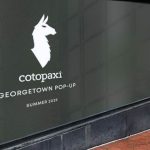Billabong’s new CEO Neil Fiske last week outlined a seven-point turnaround plan, which includes rebuilding the company’s global brands, sorting emerging brands, and fine-tuning merchandising strategies with fewer better styles.
Billabong also indicated business has lately been stabilizing or picking up with the exception of the Americas region, which is being hurt by weakness at Canada’s West 49 chain. Fiske was appointed CEO in September after Billabong finally reached agreement with U.S. hedge funds Oaktree Capital and Centerbridge Partners for a $385 million debt and equity financing deal following a long sales process.
At Billabong’s annual meeting, Fiske, who is credited with recently turning around Eddie Bauer as well as Bath & Body Works in the past, said Billabong had become “enormously complex and diversified.”
“We have been trying to do too many things and none of them particularly well,” said Fiske. “Building global brands takes one skill set. Running regional multi-brand retail is something totally different. And being a pure play multi-brand e-commerce business is another thing altogether. Then multiply that complexity by a regionalized organization structure with independent decision-making and different operating infrastructures. As complexity grew, we lost focus.”
Billabong brand remains strong
He added, “It’s exciting to be here and see the potential right in front of us. It’s tangible. It’s real. But to get it, we’re going to have to make bold moves. Get back to the core. Chop the unprofitable branches off the tree. Focus on what we are best at doing. Create a brand renaissance.”
An overarching new mantra encapsulating the turnaround scheme is “fewer, bigger, better businesses, fewer bigger better brands and fewer bigger better styles.”
“This philosophy will pervade everything we do,” he said.
The Big 3 and the rest
Fiske noted that Billabong has several brands but “we treat them all pretty much the same. Each brand, for example, gets a comparable level of marketing regardless of where it is in its lifecycle or growth potential. RVCA is showing tremendous growth. But we’re giving it the same level of marketing as more mature brands instead of putting our foot on the gas pedal and investing to accelerate growth and market share.”
Towards that end, the company has sorted its portfolio into two groups “the big three” of Billabong, Element, and RVCA, and its smaller ”emerging brands.”
With the appropriate focus and resourcing, Fiske said the “big three” brands have the potential to grow consistently and deliver strong profitability. He said Billabong remains an iconic surfing brand that still owns the authentic surf lifestyle; Element is a leading authentic skate apparel brand and connects Billabong to the street culture; and RVCA embodies a unique blend of multi-sport, culture, and art.
Some brands in the company's emerging brand portfolio, specifically mentioning Von Zipper, have the potential to become much bigger lifestyle brands. Other emerging brands include Honolua Surf Company, Kustom, Palmers Surf, Xcel, Tigerlily, and Sector 9.
“We will keep the ones that have growth and category leadership potential and evaluate our options for the others,” he said. “You will see us tailor specific strategies to each brand based on their size, potential, life cycle, and role in the portfolio.”
“Maximizing the power and creativity of these founders is fundamental to our brand renaissance,” Fiske said
A 25 percent cut in SKUs
On the marketing side, a more comprehensive 12-month marking campaign around major store is being planned, as well as a big shift toward customer relationship management (CRM) and digital in order to directly engaging the core 15-18 year old. The biggest growth opportunities, such as RVCA and Billabong women’s, will get stronger backing.
More D2C sales, less sourcing from China
On the backend, further restructuring is being planned for Billabong’s supply chain, moving to fewer, bigger suppliers and gradually diversifying out of China. The overall organization will be realigned by the end of January or early February with a focus on “developing global brand structure for the big three and fostering brand specific cultures, as well as strengthening teams, leveraging scale, and rationalizing selling and administrative costs. Finally, further cost reductions will be explored to improve profits and fund a marketing war chest.
Chairman Ian Pollard said sales so far this financial year were “steady or slightly improving” in most markets except the Americas, which had been hit by problems at Canadian retailer West 49, management disruption and the region’s “customer confidence as we negotiated our way through the difficult period in mid-2013.”
While November’s results of the Americas were “much better,” the region was $9 million down in EBITDA for the first four months before significant items of the current fiscal year. Collectively, the rest of the group is ahead of the prior year on a comparable basis.
Added Pollard, “I am confident though, that having withstood challenges few other brands could have, ours will flourish once they receive our full attention and appropriate investment and will in due course provide us a more appropriate return on your investment than they currently do.”















